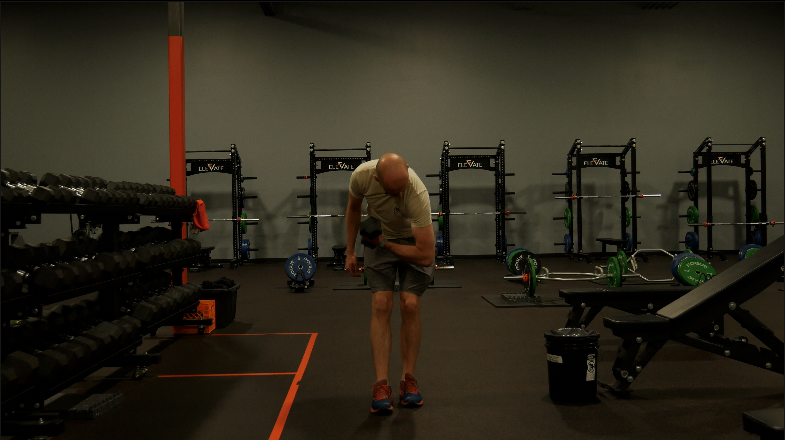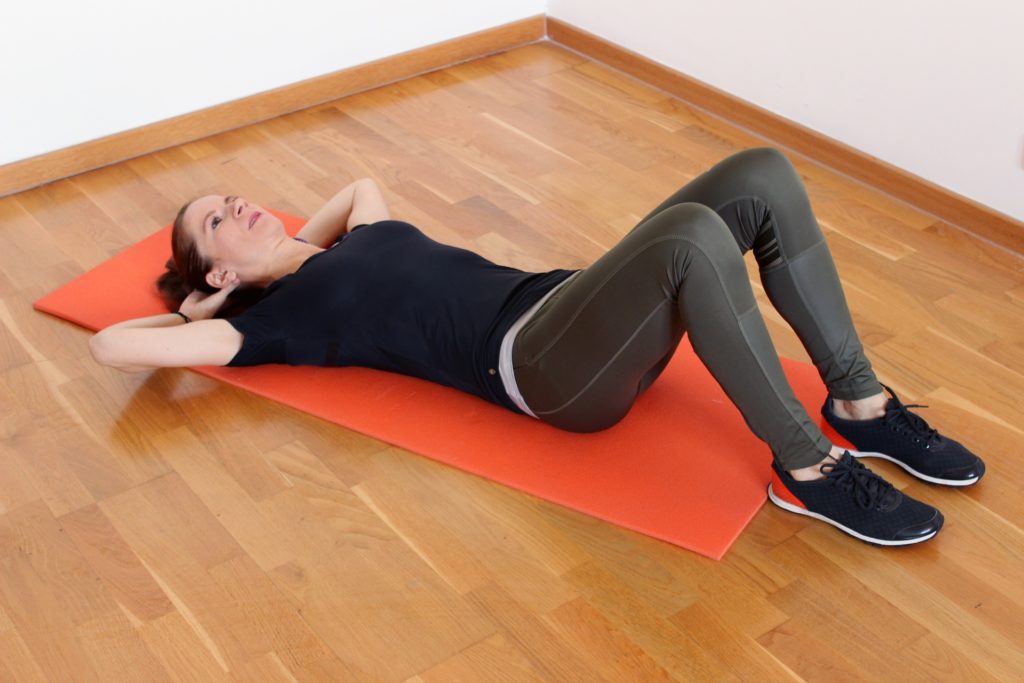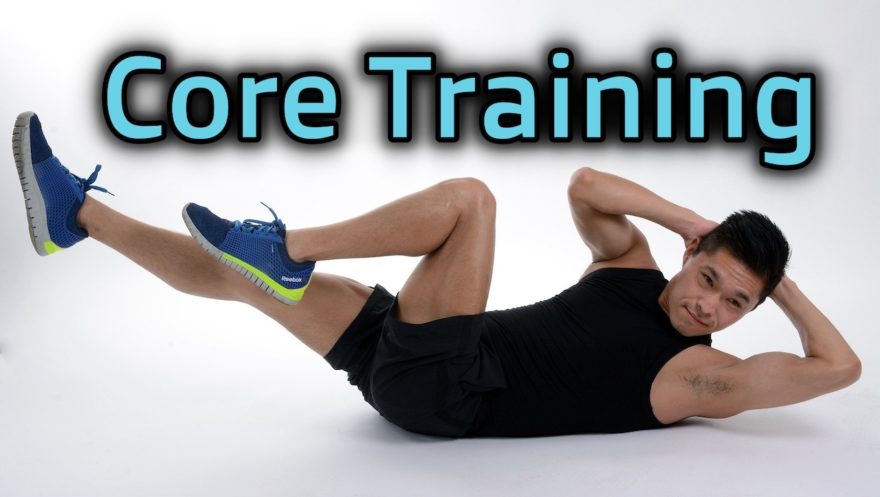Table of Contents
Core training…it’s not what you think it is.
Core training is often recommended for getting those pesky rib flares to go away, and MOS DEF going to eliminate that anterior pelvic tilt…
Right?
RIGHT??!!?
Uh, no fam.
There are tons of misconceptions surrounding core training, the stack, and all that mess.
Believe it or not:
- Rib flares and anterior pelvic tilt have NOTHING to do with a weak core
- A posterior tilt doesn’t always equate with a counternutated sacrum
- You don’t have to maintain a particular “core” position with every activity ever!!!!!!
So then what does core training entail?
Check out Movement Debrief Episode 150 below to find out!
Watch the video below for your viewing pleasure.
Or listen to my sultry voice on the podcast version:
If you want to watch these live, add me on Instagram.
Show notes
Check out Human Matrix promo video below:
Below are some testimonials for the class:
Want to sign up? Click on the following locations below:
May 29th-30th, 2021 Boston, MA (Early bird ends April 25th at 11:55 pm!)
August 14th-15th, 2021, Ann Arbor, MI (Early bird ends July 18th at 11:55 pm!)
September 25th-26th, 2021, Wyckoff, NJ (Early bird ends August 22nd at 11:55 pm)
October 23rd-24th, Philadelphia, PA (Early bird ends September 26th at 11:55pm)
November 6th-7th, 2021, Charlotte, NC (Early bird ends October 3rd at 11:55 pm)
Montreal, Canada (POSTPONED DUE TO COVID-19) [6 CEUs approved for Athletic Therapists by CATA!]
Or check out this little teaser for Human Matrix home study. Best part is if you attend the live course you’ll get this bad boy for free! (Release date not known yet 🙁
Here is a signup for my newsletter to get nearly 5 hours and 50 pages of content, access to my free breathing and body mechanics course, a free acute:chronic workload calculator, basketball conditioning program, podcasts, and weekend learning goodies:
[yikes-mailchimp form=”1″ submit=”Get learning goodies and more”]
The movements of the sacroiliac joint – A great study outlining what positions the sacrum is in within various postures.
Elevate Sports Performance and Healthcare – The spot that I work at in Las Vegas.
The Difference Between Spinal and Pelvic Motion – A great debrief that will help you refine and get the most out of your posterior pelvic tilt.
Bill Hartman – Daddy-O Pops. He has been my biggest mentor.
Is Spinal Flexion Bad? – Here, I debunk the supposed unsafe spinal flexion that we do.
InstantPot – An absolute must in your cooking repertoire.
Does a rib flare mean my core is weak?
Question: I have anterior pelvic tilt as well, and one thing that I often hear about treating anterior pelvic tilt and rib flare is to strengthen your core. I guess I’m wondering how to go about core exercises with my narrow ISA. Often times when I exercise my core, my upper obliques want to do all the work, which squeezes my ribs together and makes my ISA narrower. Do you think that as of right now, I should just stop doing all core exercises to prevent this, or should I continue to do the more standard types of core exercises like planks and dead-bugs?
Answer: Before we go through what to do for my main man Bob, we need to clear the air on a few different pieces:
- Anterior pelvic tilt is normal to see when you are standing upright. According to this study, the sacrum is nutated during standing.
- The key is to restore any loss of movement that may be occurring versus static posture.
- Anterior pelvic tilt and rib flare does not occur because of a lack of core strength.
We don’t have any evidence to point to a specific or series of causes for the body assuming the aforementioned positions.
If I had to hedge my bets, my thought would be these orientations occur because of one’s genetic structure and attempting to manage internal anatomy to maintain being upright against gravity.
This position doesn’t weaken the abdominal muscles but eccentrically orients the abdominal wall, more so the lower portions. This orientation would reduce force production at the abs to alter the position.
A similar situation to the abs would be trying to do a bicep curl from an extended elbow as opposed to 90 degrees of elbow flexion. We can all agree that it’s much harder to perform the bicep curl when the arm is fully straight compared to when the elbow is bent 90 degrees.

However, we don’t say that it’s harder because the bicep is weak. The curl is more difficult because of the starting position.
So too with the abs when you see a rib flare and anterior pelvic tilt. In this orientation, the diaphragm is descended far (concentric), which places the lower abs in an eccentric orientation, as these muscles act in opposing fashion during respiration.
This position is especially the case with a narrow infrasternal angle, as the diaphragm is descended further in comparison to a wide infrasternal angle. This narrower angle will give the upper abs a bit more leverage than the lower, hence why when Bob does his core exercises it’s all upper obliques all…day…every…day.
The “fix” isn’t to stop all core training, but to perform activities that act in opposition to this current movement behavior.
The first step is to stack
What the stack aims to do is the exact opposite movement strategy that our caller refers to:
- Posteriorly tilt the pelvis instead of anteriorly tilt
- Restore relative sacral motion by breathing
- Fully exhale to reduce rib flare and make infrasternal angle dynamic
You might start with a move that helps drive each of these positions without compensatory strategies. The hooklying tilt with a one-arm reach might be a great starting point:
From here, it’s just a matter of being able to demonstrate a wide variety of movements without falling into these compensatory strategies. That would include lower body work like squats, split squats, hinges; and upper body stuff like pushes and pulls. This training could even extend to higher-speed activities or other terminal tasks.
All traditional “core training” serves for in my opinion is a lower level drill to teach your body to move while expressing desirable movement options.
Take a half-kneeling cable chop for example:
Instead of thinking this move is great for them oblique gains. Think that I am teaching my body to rotate in a split stance position. I can use these activities to aid in shifting into the downside hip, which is important to loading a cut if we related this to a terminal task.
If you think of core exercises as a build-up to a greater purpose or task, then NO ONE will mess with you 🙂
Why do we drive a posterior tilt?
Question: I am very confused about core training. Why do we maintain posterior tilt throughout the range, when in real life the sacrum would nutate with hip extension?
Answer: The reason is that most of us wonderful fam have a bias towards anterior pelvic tilt that we struggle to overcome. We would know that this orientation would be struggle bus because of the range of motion loss in the hip joint.
What the posterior tilt does is it helps teach the individual to be able to move the pelvis in the opposite direction of their current bias. The hope would be that this helps restore some movement loss in the lower extremities.
Now, Mohamed is correct. The sacrum ought to relatively nutate when in hip extension, and counternutate with the hip flexed. However, there is an important nuance to know that we are leaving out of the equation:
The tuck does NOT counternutate the sacrum
There is only about 2 degrees of available motion in the sacroiliac joint. So to think that we can isolate nutation and counternutation by a posterior tilt is highly unlikely. We aren’t that precise of movers.
Yet restoring these motions is important when creating a dynamic pelvis.
So how in the heck do we nutate and counternutate like bosses?
What drives these sacroiliac movements?
The answer: breathing.
Nutation and counternutation occur by tension changes in the pelvic floor. The relative tension and shape of the pelvic floor os determined by the natural visceral movement that occurs with breathing.
That’s why you cannot tuck alone and hope for the best. Ensuring you have the breathing portion down pat, the top part of the stack, is key to driving this motion.
That said, I don’t expect peeps to make sure that the pelvis is just so and the ribcage must be in the perfect position before doing any movement or else they’ll die! That’s unrealistic, unnecessary, and counterproductive when it comes to dynamic and explosive movements.

What’s important is the body is moving in the directions necessary to maximize force production for a given task.
If you are trying to jump as high as possible with little ground contact, you want vertical pelvis displacement, not bending over at the waist and knocking the knees together.
If you are cutting and changing direction, your body needs to change levels and lower in position, again, not drastically anteriorly tilt the pelvis and staying too high into the cut.
If you are explosively rotating as in a golf swing, dumping the pelvis forward restricts range at the hips and will limit your ability to rotate fully.
All of these examples can be improved with technical coaching and appropriate drill selection that produces the desired outcome. This could be using resistance to assist to slow down people in specific directions. limiting motion with boxes, and many other things.
Slow speed exercises, however, are the prime time to focus on stacking and breathing, as technique can be better emphasized. The hope would be that this strategy increases movement options and helps build context to be used in terminal tasks.
Personally, I’ve found by emphasizing stacking and such in slow speed and with appropriate fast speed drill selection, you can marry both worlds effectively.
Ab contractions during gait
Question: Thoughts on abdominal activity during gait.
Answer: The abs should be active during the gait cycle, as your obliques are your big trunk rotators.
HOWEVER!
Gait should be a fairly automatic activity, so you shouldn’t have to actively tense them during gait. This may impact your movement capabilities.
The most that I’ll do is encourage someone to swing their arms or develop awareness of heel contact when they step.
Breathing exercises with hypertension?
Question: Are the breathing exercises I do safe for people with high blood pressure?
Answer: HELL TO THE YES.
The breathing activity that we have to be most careful of is the valsalva maneuver, where you take a big breath of air in and exhale against a closed glottis.
Essentially, this strategy creates a high pressure environment in the body, which is useful when lifting heavy ass weights.
The problem, however, is that this action increases blood pressure considerably. So for those with hypertension and heart disease, it is often avoided.
The easy breathing exercises that I encourage, whether gentle nasal breathing (which can reduce blood pressure), or even exhaling with a controlled pause, are safe. And the reason why they are safe is because you are not creating a high pressure environment within the body during these activities, and blood pressure doesn’t raise up (#joshgroban).
Are crunches and situps useful?
Question: Do crunches even have a purpose? Is it better to do planks, glute-focused core training, and dead bugs?
Answer: First off, spinal flexion is totally safe. The in vivo evidence seems to suggest very much so.
Though safety is there, are crunches, situps, and the like useful?
In certain instances, yes.
What a crunch or a situp can do is encourage segmental flexion within the spine; aka posterior expansion.
This maneuver, however, can be quite difficult for someone who has TONS of anterior expansion. They may not be able to push their stuff posteriorly, which can limit situp efficacy. In a similar vein, they may end up just bending at the sternum to complete the action. No bueno.
I start first with things that would drive posterior expansion a bit more easily. Moves like reverse crunches are a good starting point:
Propulsion arc and core training?
Question: Is using the propulsion arc a great way to choose core exercises?
Answer: Absolutely. You can select exercises to drive particular movements depending on how you place the body within these arcs.
If you have someone who needs external rotation to improve, you may choose exercises that involve:
- hip flexion at 0-60 or 100+ degrees
- Shoulder flexion at 0-60 or 120-180 degrees
A low sit cable chop fits really well here:
If you need internal rotation, you could go with:
- hip flexion at 60-100 or at 0 degrees
- Shoulder flexion at 60-120 degrees
A diagonal might be an option for this:
And if you are feeling REAL frisky and need frontside and backside expansion, then any rotational activity can be useful. To get rotation through the sacrum and thorax, the high split chop is a wonderful choice:
Sum up
- Though we don’t know why compensations occur, we want to select activities that place one in the exact opposite orientation; restoring the full spectrum of movement options
- Tucking doesn’t driver counternutation, but places the pelvis in an orientation to drive sacral dynamics
- We don’t assume the stack in explosive activities. Coach position during slow-speed work, then choose drills with constraints that force desired positions.
- Breathwork is safe for those with hypertension as long as the valsava maneuver is minimized
- Situps, where there is some posterior expansion available, can be useful for further driving this adaptation.
Song Credit: Bensoun

